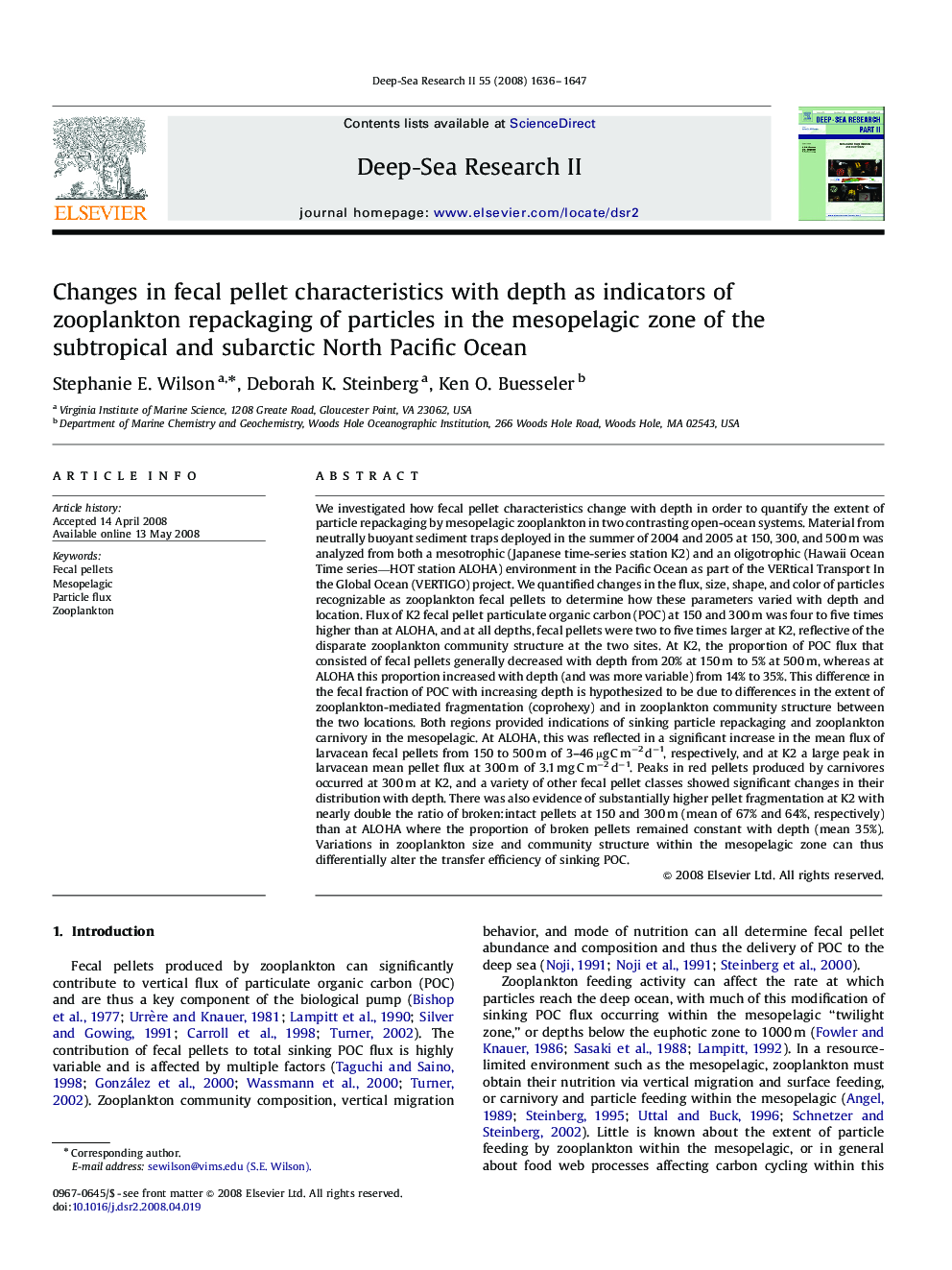| کد مقاله | کد نشریه | سال انتشار | مقاله انگلیسی | نسخه تمام متن |
|---|---|---|---|---|
| 4538025 | 1626494 | 2008 | 12 صفحه PDF | دانلود رایگان |

We investigated how fecal pellet characteristics change with depth in order to quantify the extent of particle repackaging by mesopelagic zooplankton in two contrasting open-ocean systems. Material from neutrally buoyant sediment traps deployed in the summer of 2004 and 2005 at 150, 300, and 500 m was analyzed from both a mesotrophic (Japanese time-series station K2) and an oligotrophic (Hawaii Ocean Time series—HOT station ALOHA) environment in the Pacific Ocean as part of the VERtical Transport In the Global Ocean (VERTIGO) project. We quantified changes in the flux, size, shape, and color of particles recognizable as zooplankton fecal pellets to determine how these parameters varied with depth and location. Flux of K2 fecal pellet particulate organic carbon (POC) at 150 and 300 m was four to five times higher than at ALOHA, and at all depths, fecal pellets were two to five times larger at K2, reflective of the disparate zooplankton community structure at the two sites. At K2, the proportion of POC flux that consisted of fecal pellets generally decreased with depth from 20% at 150 m to 5% at 500 m, whereas at ALOHA this proportion increased with depth (and was more variable) from 14% to 35%. This difference in the fecal fraction of POC with increasing depth is hypothesized to be due to differences in the extent of zooplankton-mediated fragmentation (coprohexy) and in zooplankton community structure between the two locations. Both regions provided indications of sinking particle repackaging and zooplankton carnivory in the mesopelagic. At ALOHA, this was reflected in a significant increase in the mean flux of larvacean fecal pellets from 150 to 500 m of 3–46 μg C m−2 d−1, respectively, and at K2 a large peak in larvacean mean pellet flux at 300 m of 3.1 mg C m−2 d−1. Peaks in red pellets produced by carnivores occurred at 300 m at K2, and a variety of other fecal pellet classes showed significant changes in their distribution with depth. There was also evidence of substantially higher pellet fragmentation at K2 with nearly double the ratio of broken:intact pellets at 150 and 300 m (mean of 67% and 64%, respectively) than at ALOHA where the proportion of broken pellets remained constant with depth (mean 35%). Variations in zooplankton size and community structure within the mesopelagic zone can thus differentially alter the transfer efficiency of sinking POC.
Journal: Deep Sea Research Part II: Topical Studies in Oceanography - Volume 55, Issues 14–15, July 2008, Pages 1636–1647